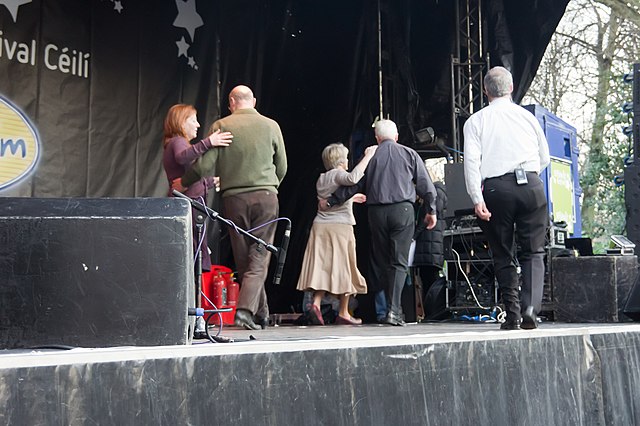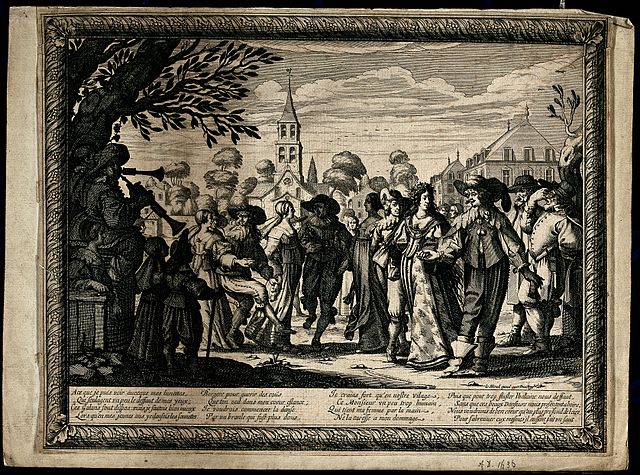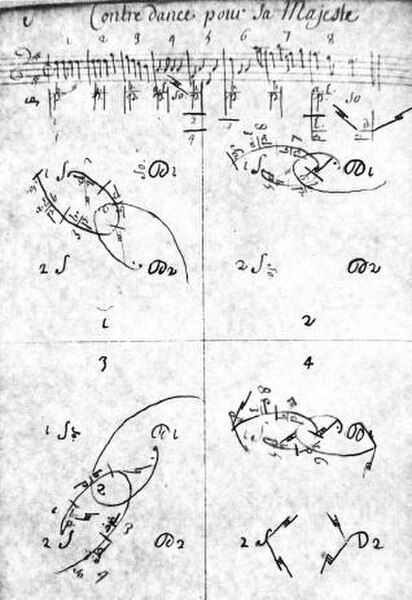A cèilidh or céilí is a traditional Scottish and Irish social gathering. In its most basic form, it simply means a social visit. In contemporary usage, it usually involves dancing and playing Gaelic folk music, either at a home or a larger concert at a social hall or other community gathering place.
The Northern Constabulary Pipe Band Fundraising Cèilidh at North Kessock, Scotland
Scottish cèilidh dancing at the 2003 Smithsonian Folklife Festival (Washington, DC)
Céilí dancing
A country dance is any of a very large number of social dances of a type that originated in the British Isles; it is the repeated execution of a predefined sequence of figures, carefully designed to fit a fixed length of music, performed by a group of people, usually in couples, in one or more sets. The figures involve interaction with your partner and/or with other dancers, usually with a progression so that you dance with everyone in your set. It is common in modern times to have a "caller" who teaches the dance and then calls the figures as you dance. Country dances are done in many different styles.
Comical 18th-century country dance; engraving by Hogarth
Village country dance; engraving by Abraham Bosse, 1633
Lorin's contradanse choreography, one of the earliest western dance notations
The "La Trénis" figure of the Contredanse, an illustration from Le Bon Genre, Paris, 1805







